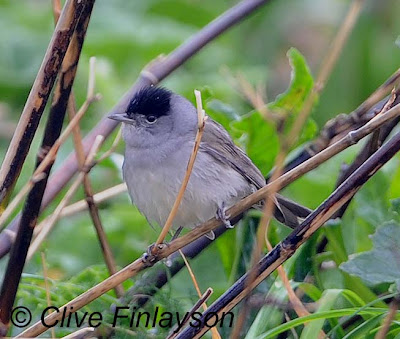Yesterday's wind died down almost as quickly as it started. The morning was grey with drizzle and occasional downpours. It seemed perfect for a fall of migrants, and it was! The bad weather disorientates migrants that are flying at night and they tend to make a fall, usually in coastal headlands. Once down they start to feed as from first light. The wet vegetation often soaks their plumage but they just get on with the task of recovering lost energy. Today's fall was dominated by Black Redstarts (overwhelmingly males) and Chiffchaffs. I also saw Hoopoes, Serins, Stonechats, Dartford Warblers, Blackcaps, Willow and Subalpine Warblers. Some of these are migrants that have just crossed the Sahara while others are in from Morocco. House Martins and Swallows also fed incessantly on the morning's batch of aerial plankton. Here are some photographs from this morning...
The Black Redstarts that winter and migrate past Gibraltar breed in western and central Europe. They belong to the subspecies Phoenicurus ochruros gibraltariensis, curiously as they were described from here by Gmelin in the 18th Century even though they don't breed here! The breeding Black Redstarts of the nearbly sierras belong to the subspecies aterrimus, are much blacker on the head and mantle and the white wing panel is larger.
Black Redstarts: males (above) and female (below)
Subalpine Warbler: a tras-Saharan migrant
Wet female Stonechat
Serin
Male Blackcap
Chiffchaffs: hunting in small groups
Hunting insects often involves pouncing on them from above
The local Blue Rock Thrushes were also actively hunting, and looking wet!













No comments:
Post a Comment